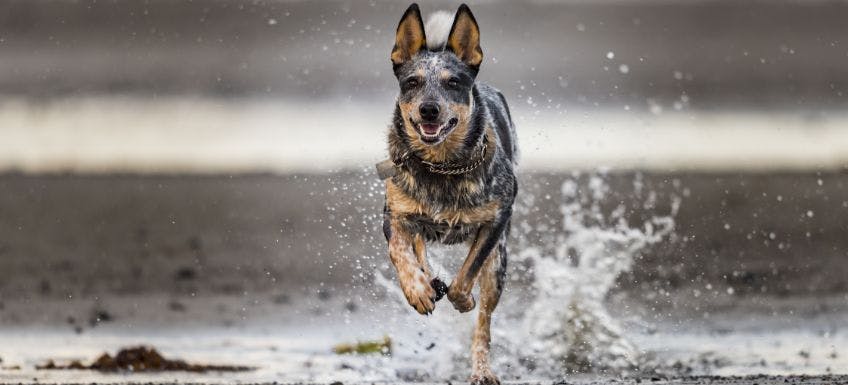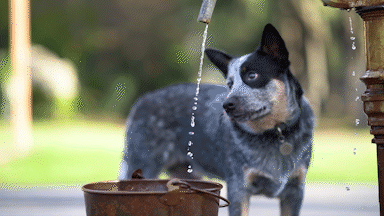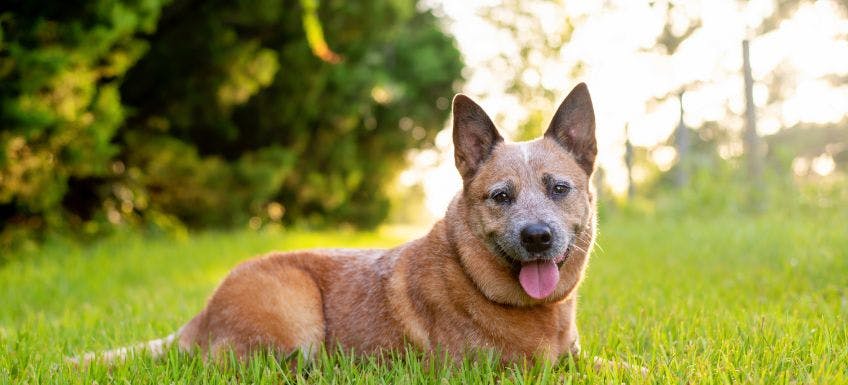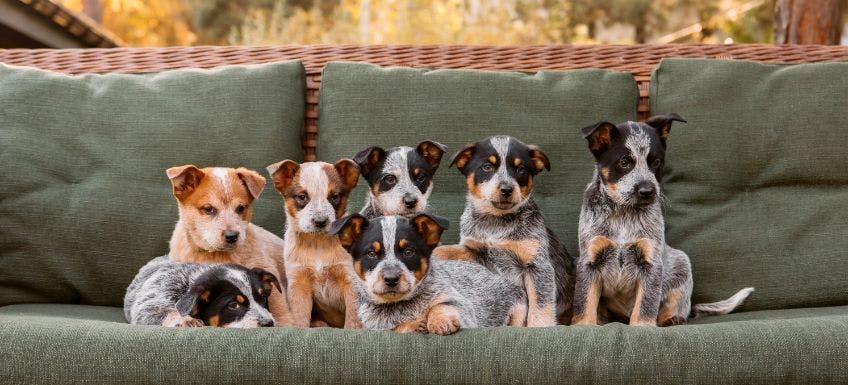
Blue Heeler
Easy to Train
Protective
Working Dog
Intelligent
High Energy
Suited For Hot Weather
Breed Snapshot
- Weight: 15-22 kg
- Height: 43-51 cm
- Breed Size: Medium
- Lifespan: 12-16 years
- Dog Breed Group: Herding Group
- Coat Type: Short Hair
Description
The Blue Heeler, also known as the Australian Cattle Dog, is a whirlwind of activity in a compact and muscular package. With a striking blue coat that's dappled with black and white, these dogs are a captivating sight. They typically weigh between 13.5 to 22.5 kilograms and stand 43 to 51 centimeters tall at the shoulder. Their short, thick fur is resistant to the elements, and their ears are often alert. The Australian Cattle Dog also comes in a red colour vairiantion and hence is referred to as a Red Heeler.
Characteristics
Blue Heelers are brainy, loyal, and hyperactive dogs that were originally bred for cattle herding. Their inexhaustible energy levels necessitate a confident and unwavering approach to training, but they are extremely trainable and make superb guard dogs. They are fiercely protective of their family and can be suspicious of strangers, but with proper socialisation, they can learn to be cordial and accommodating to new people and situations. The Blue Heeler was developed in the 1800s in Australia specifically for herding cattle. By crossbreeding the Scottish Highland Collie with the Dingo, they created a durable and tenacious breed that could handle the rugged Australian landscape and weather. The Blue Heeler is also referred to as the Australian Cattle Dog, Queensland Heeler, and Bluey.

Health Problems
Although Blue Heelers are typically a healthy breed, they are prone to certain medical conditions, including hip dysplasia, deafness, and progressive retinal atrophy. They may also be vulnerable to certain skin conditions, such as allergies or dermatitis. Regular veterinary check-ups, a healthy diet, and ample exercise can help prevent these problems.
Exercise
Blue Heelers are an incredibly energetic breed that requires plenty of daily exercise and mental stimulation to remain healthy and content. They thrive on activities such as obedience training, agility, and herding, and enjoy lengthy walks, runs, and hikes with their owners. They require a minimum of 60 to 90 minutes of exercise each day to keep them physically and mentally engaged.
Grooming
Blue Heelers have a short, low-maintenance coat that requires minimal grooming. They should be brushed frequently to eliminate loose hair and grime, and bathed when necessary. They may also require routine nail trimming and teeth cleaning to maintain their overall health.
Living Environment
Blue Heelers fare best in homes with a large, securely fenced yard where they can play and exercise. They are not well-suited for apartment living or homes without outdoor space. They also thrive in homes with an active owner who can provide plenty of exercise and mental stimulation. Their unbridled energy can be challenging to manage in a confined living area.

An Adult Red Heeler

Australian Cattle Dog Puppies
Blue Heeler FAQs
What is the difference between a Red Heeler and a Blue Heeler??
The main difference between the two is their colour of their coats, Red heelers have a coat that is predominantly red, while blue heelers have a coat that is predominantly blue.
Is a Blue Heeler a good family dog?
Blue Heelers can be great family pets, however they do require some training to understand boundaries. They also need adequate regular exercise to keep them stimulated if not in a working environment.
Is a Red Heeler a dingo?
Australian Cattle Dog's were originally bred from dingoes, however they have been cross bred over time and are now a domesticated working dog.